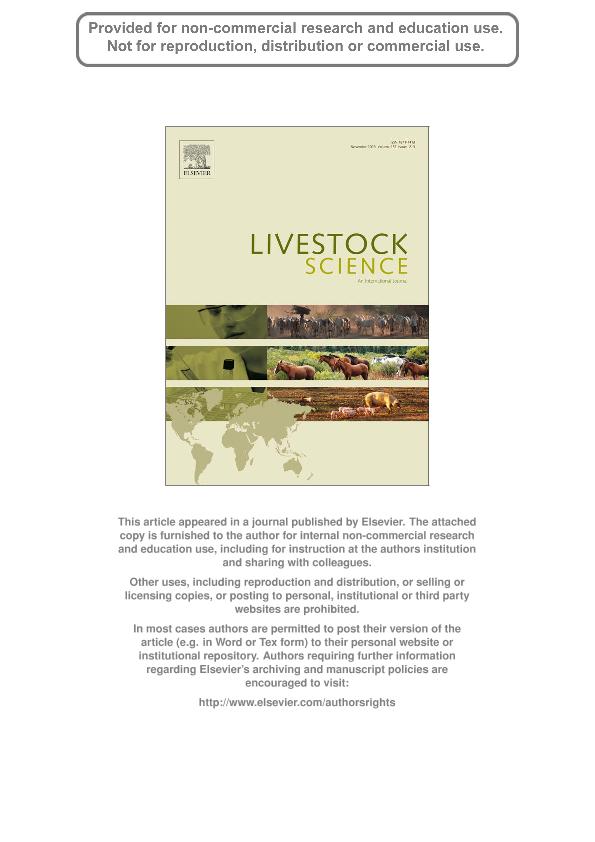Artículo
Salmonella transmission from the gilt to her offspring
Parada, Julian ; Carranza, Andres Ignacio; Pichel, M.; Tamiozzo, Pablo Jesus
; Carranza, Andres Ignacio; Pichel, M.; Tamiozzo, Pablo Jesus ; Pelliza, B. R.; Ambrogi, Arnaldo
; Pelliza, B. R.; Ambrogi, Arnaldo
 ; Carranza, Andres Ignacio; Pichel, M.; Tamiozzo, Pablo Jesus
; Carranza, Andres Ignacio; Pichel, M.; Tamiozzo, Pablo Jesus ; Pelliza, B. R.; Ambrogi, Arnaldo
; Pelliza, B. R.; Ambrogi, Arnaldo
Fecha de publicación:
10/2013
Editorial:
Elsevier Science
Revista:
Livestock Science
ISSN:
1871-1413
Idioma:
Inglés
Tipo de recurso:
Artículo publicado
Resumen
The identification of gilts as a key factor in the salmonellosis dynamics is an important issue to the implementation of specific control programs in herds. This paper aims to assess the transmission of Salmonella enterica from the gilt to her offspring. The study was carried out in a multiple sites farrow-to-finish farm, built before the study to house 4500 sows, populated gradually with gilts weaned with less than 9 days of age. To determine the Salmonella infection prevalence in gilts, 1000 blood samples, 719 fecal samples and 236 mesenteric lymph nodes were collected from ten groups of gilts at an average age of 150 days. After that, a longitudinal study of the newborn piglets from the breeding herd was carried out for 3 consecutive weeks, which were followed from 10 to 150 days of age by serology (ELISA) and bacteriology (ISO 6579/02). The relatedness among the Salmonella isolates recovered was determined by XbaI-PFGE. A significant variability in the average of seropositive gilts among groups (from 0.00 to 31.52%) and low Salmonella shedding (1.4%) were found in the breeding herd at 150 days of age, but a wide range of Salmonella serovars (n=11) were isolated from slaughtered gilts. In the serological profile of the offspring, none of the pigs were found seropositive between 35 and 90 days of age, and bacteriology allowed to recover S. Derby from pigs only after 90 days of age. This suggests that offspring infection may not be taking place in the farrowing unit. The S. Schwarzengrund isolates recovered from gilts showed mainly the same XbaI-PFGE pattern, whereas S. Derby patterns of the strains obtained from gilts were different and also differed from the single XbaI-PFGE pattern isolated from the offspring. All these results suggest that serotype specific passive immunity would protect pigs from infection by S. enterica strains present in sows during their stay in the farrowing facilities, but fattening pigs can be infected by Salmonella from different sources of infection.
Palabras clave:
Salmonellosis
,
Swine Production
,
On-Farm Transmission
,
Molecular Analysis
Archivos asociados
Licencia
Identificadores
Colecciones
Articulos(CCT - CORDOBA)
Articulos de CTRO.CIENTIFICO TECNOL.CONICET - CORDOBA
Articulos de CTRO.CIENTIFICO TECNOL.CONICET - CORDOBA
Citación
Parada, Julian; Carranza, Andres Ignacio; Pichel, M.; Tamiozzo, Pablo Jesus; Pelliza, B. R.; et al.; Salmonella transmission from the gilt to her offspring; Elsevier Science; Livestock Science; 157; 2-3; 10-2013; 605-611
Compartir
Altmétricas



